How to Test Mobile Content Effectively
Why does mobile content have to be tested? What is Quality Assurance, and how do you apply QA strategies for mobile training deployment? You can find answers for these and related questions in this recording of the expert webinar with Mark Simon, who has over 25 years of hands-on experience with design, development, and delivery of e-Learning and instructor-led training.
The presentation
Here’s the presentation Mark Simon used at the webinar, which we’re providing here for your convenience.
The transcript
iSpring experts also took part in this free webinar. Below you can find the script of their part.
Hi, everybody! I’m really excited to share the capabilities of iSpring’s free mobile apps with you today. These apps are the perfect way for your users to view content on their mobile devices in a fully native environment, with a convenient content library, favorites list, and fullscreen mode, with the ability to save content to their devices for offline viewing.
Let’s start here with a look at the QA capabilities of eLearning authoring tools. If you’re creating a PowerPoint-based course with iSpring Suite, you have access to all the separate tools from the toolbar. When you want to see how your course looks on mobile devices, just click the publish button. This publish button is also available if you’re using any of these tools standalone. I’m going to use iSpring TalkMaster as an example of quick publishing and great responsive design.
First, click publish on the toolbar. And, of course you’ll want to select an HTML5 option for mobile. Most of these publishing destinations include the iSpring Play mobile app option, which will prompt users on mobile devices to use the mobile app. We’ll have a look at that later.
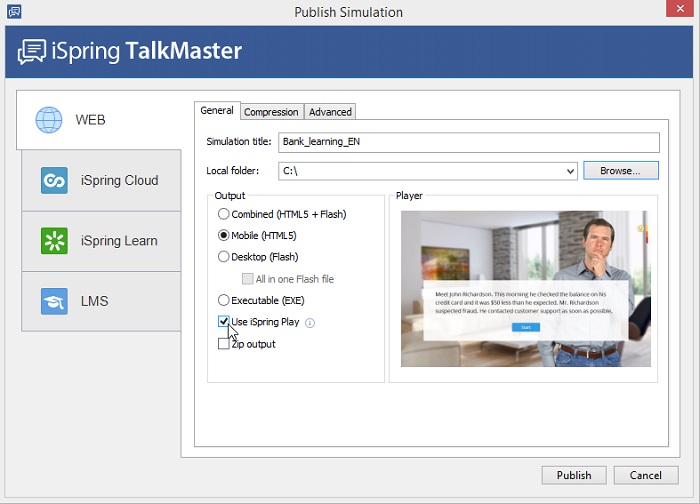
First, I’d like to mention something about viewing courses offline with a 3rd-party LMS. If you’d like their statistics to be saved to the LMS when their device reconnects, you should use the Tin Can API LMS standard. Just go to the Learning Course tab, and select “experience API” from the list.


Naturally, you should make sure your LMS supports this standard before publishing. If you’re using iSpring Learn LMS, you don’t have to worry about that at all. You don’t even have to configure the settings! As you can see, the iSpring Play option is ghosted, because iSpring Learn has its very own mobile app that synchronizes offline results.
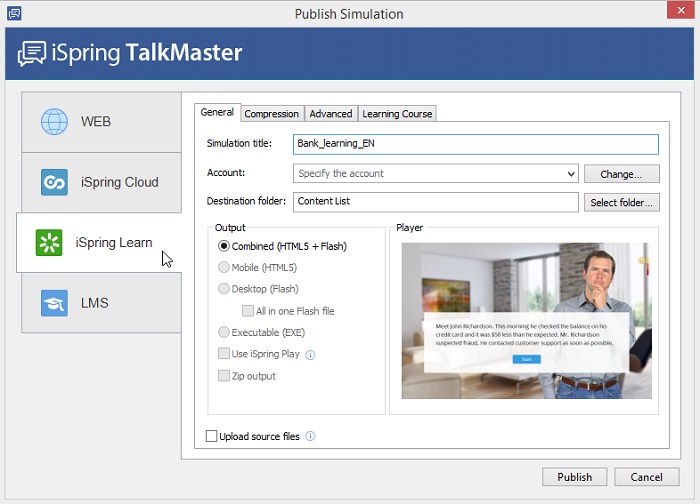
I’m just going to publish for the web so you can see the QA capabilities in iSpring authoring tools. Once the preview window opens up, you can immediately see how it looks on different devices. This is the standard desktop and laptop view, but you can also see how it looks on tablets and smartphones. You can even rotate the display, and as you can see, all the elements on the screen automatically adapt to the display size and orientation.
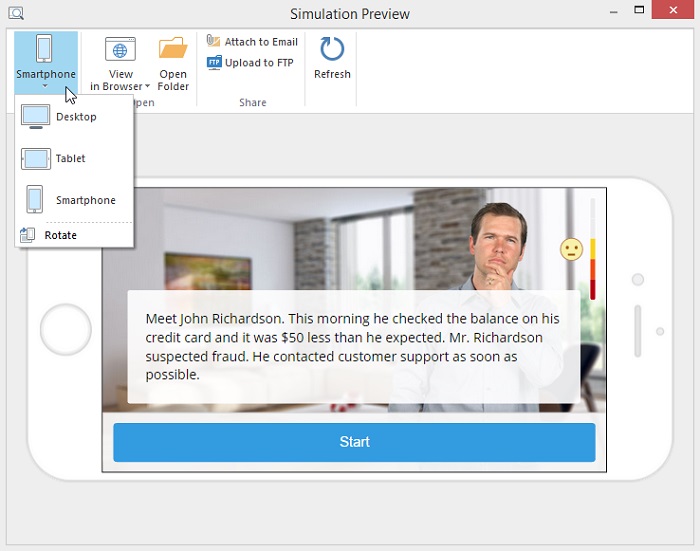
Now let’s close out of this and go to the iSpring website for more details about the free mobile apps. We’ll start with iSpring Play. As you can see, it’s available for Apple and Android devices on the App Store and Google Play. And it’s a free download for all of your users. This screenshot shows you an example of a full e-Learning course with video presenter and PowerPoint slides arranged perfectly on a smartphone display.

When you select this option as I showed you before, users on mobile devices will be shown this intro screen to open the content in the free mobile app.
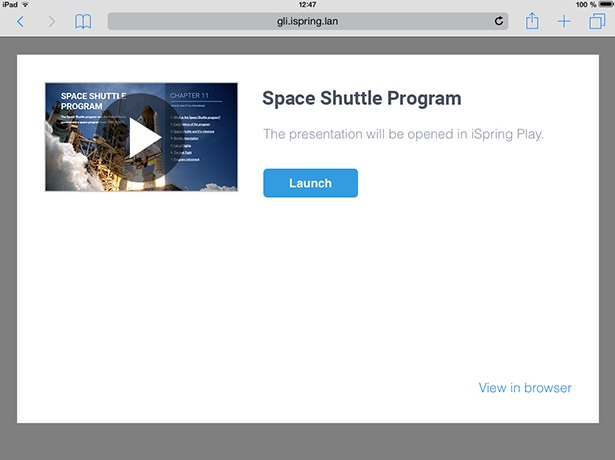
After they tap the launch button, the content will be automatically saved in the library, so it’s easily accessible in the future. They can even tap the Download button to save the content to their device for offline viewing. This is perfect for students who are on the go, and don’t always have access to an internet connection. Another fast way to access content is to add it to the Favorites list by tapping the star icon. iSpring mobile apps also offer a fullscreen mode so your users can view content without any distractions. And once again here, if you’re using a Tin Can-compliant LMS, your users can take courses offline and synchronize results as soon as their devices reconnect.
Which brings us to iSpring Learn mobile app. iSpring learn LMS and mobile app are already set up to communicate with each other, so you’ll have that offline results synchronization capability without having to configure any of the settings. And this mobile app is also available absolutely free for both Apple and Android devices. Here’s a screenshot of the interface, which actually looks the same on desktops and laptops, so if your users are switching devices a lot, they won’t be hunting for buttons when they use the app.
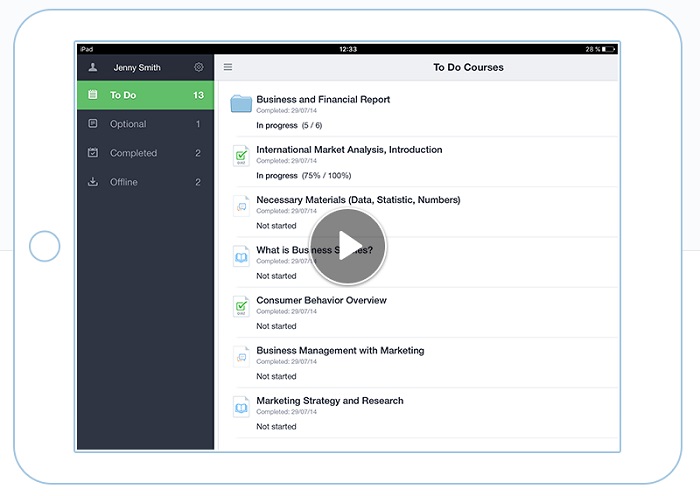
In order to save content to their device, they just need to tap the Download button next to the content item. And, as I mentioned before, this app also comes with a fullscreen mode. iSpring Learn mobile app comes with progress tracking capabilities, so your users can always see where they are in their course materials. Another great feature of iSpring Learn is that learners can automatically receive certificates for completed courses, and with the mobile app, they can get those certificates right to their device. Finally, the app provides some settings for the user to choose. They can automatically delete completed content to save space, they can automatically download assigned content, and they can use their cellular data to download courses and statistics when a wifi connection isn’t available.
Summary
To make sure that what you built is what you get, you need to test the resulting content on different mobile devices. While it may be a rather complex task, iSpring Suite provides users with a convenient preview on devices of various sizes and orientations. What’s more, iSpring free mobile apps make e-Learning truly mobile, allowing learners to study anytime and anywhere, both online and offline.
We hope you’ve found this webinar useful! If you have any questions on iSpring webinars, feel free to contact us at any time.
